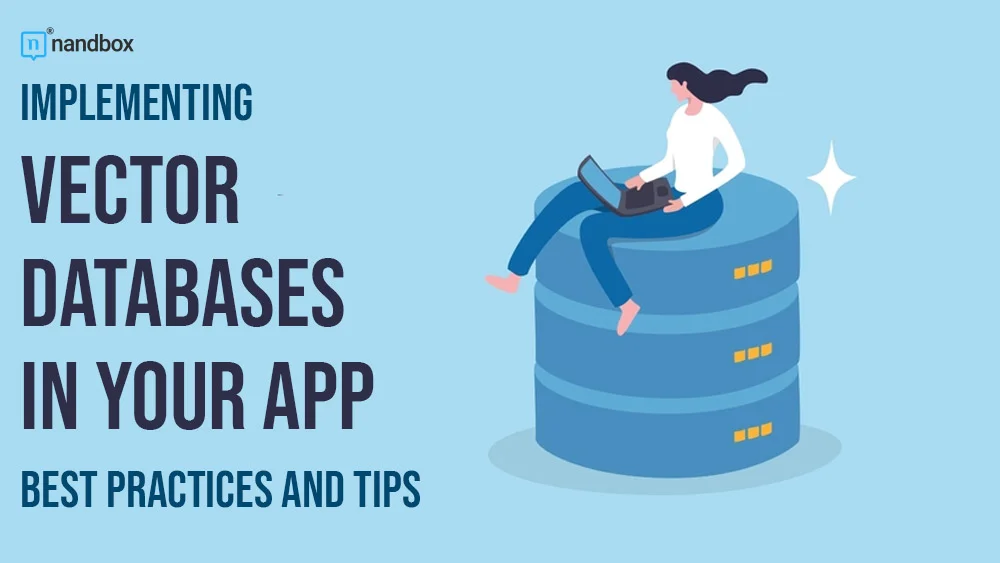The adoption of vector databases has become increasingly significant in recent years. With a projected market growth of $4.3 billion by 2028 at a compound annual growth rate (CAGR) of 23.3%, organizations across various industries recognize their potential for enhancing data management and retrieval capabilities. This surge in popularity underscores the growing demand for more efficient data processing tools in an increasingly data-driven world.
This introduction to vector databases not only sets the stage for understanding their importance but also how they can revolutionize your application’s performance. Let’s dive into what makes vector databases a vital tool in your technology stack.
Understanding Vector Databases
Vector databases store data in a format that optimizes for similarity search, crucial for applications involving artificial intelligence and machine learning. Unlike traditional databases that manage data in rows and columns, a vector database uses mathematical vectors, representing data in high-dimensional space. This allows them to perform operations like similarity searches much faster than traditional databases, making them ideal for dynamic environments where speed is critical.
This unique structure enables the powerful vector search capabilities that are essential for efficiently finding the most relevant data points in large datasets. This structure allows for rapid retrieval of similar items, a functionality that is increasingly essential as data complexity grows.
Choosing the Right Vector Database
Selecting an appropriate vector database is critical to the success of its implementation. Consider the specific needs of your application, including the scale of data, query latency requirements, and the complexity of data types handled.
Assessing the scalability of a vector database is also crucial as your data grows and evolves. Factors such as community support, documentation quality, and the flexibility of data schema should influence your decision. Moreover, reviewing the performance benchmarks of available systems helps in making an informed choice.
Data Modeling and Schema Design
Effective data modeling in vector databases involves structuring data in a way that maximizes the efficiency of similarity searches. Designing an appropriate schema involves understanding the dimensions of your vectors and arranging your storage architecture to optimize access patterns. This optimization is essential for maintaining high performance as the volume of data increases. For instance, if your application frequently retrieves images based on visual similarity, your schema should be designed to support efficient vector comparisons and quick data retrieval.
Indexing Strategies for Optimal Performance
Indexing is a method implemented to enhance the speed of data retrieval within a database. In the context of vector databases, indexing helps narrow down the search space when querying for similar vectors. Effective indexing strategies can reduce computational overhead and enhance the overall efficiency of data retrieval processes.
Implementing effective indexing strategies enhances vector search performance, ensuring faster and more accurate query results. Implementing the right indexing strategy, such as tree-based or hash-based indexing, depends on the nature of your queries and the size of your dataset. Proper indexing can dramatically improve query response times and help in scaling your application effectively.
Integrating Vector Databases with Existing Systems
Integrating vector databases into existing systems can be challenging but is essential for leveraging their benefits alongside traditional databases. Start by identifying components of your system that will benefit most from vector capabilities, such as recommendation systems or image retrieval systems.
Strategic integration facilitates seamless data flows and enhances the analytical capabilities of your applications. Use APIs and data orchestration tools to connect your vector database with other data sources, ensuring consistency and reliability across your application.
Monitoring and Maintenance
Maintaining a vector database involves regular monitoring to ensure it performs optimally. Utilize monitoring tools to track performance metrics like query latency and index efficiency. Regular audits and performance adjustments are essential to keep pace with evolving data requirements and operational needs.
Performing regular maintenance tasks, such as updating indexes or removing obsolete data, is key to sustaining both the performance and reliability of the database. It is also essential to enforce security protocols to safeguard your data and vigilantly monitor for any unauthorized entries.
Conclusion
Implementing a vector database can dramatically enhance the functionality and performance of your applications, especially those requiring rapid and efficient data retrieval. Grasping the essential elements of vector databases and adhering to the recommended practices for their deployment and upkeep allows you to fully leverage their advantages.
Careful planning, ongoing management, and continuous optimization are the cornerstones of effective vector database implementation. Remember, the key to successful implementation lies in selecting the right database, designing a thoughtful schema, and maintaining robust system monitoring. With these practices in place, you’re well on your way to leveraging the full potential of vector databases in your applications.




